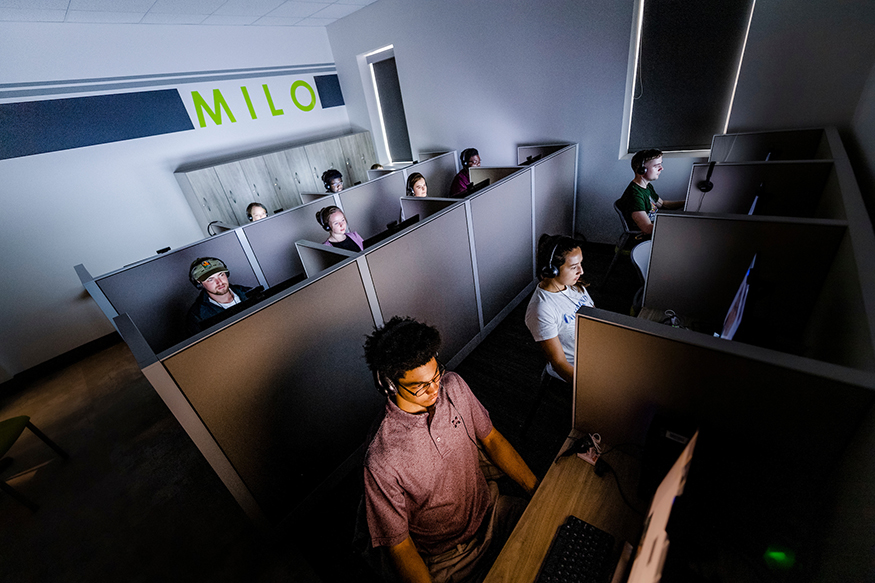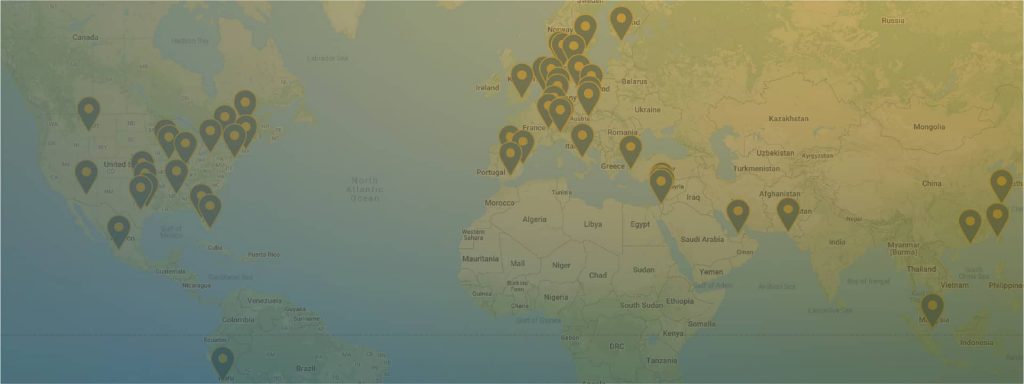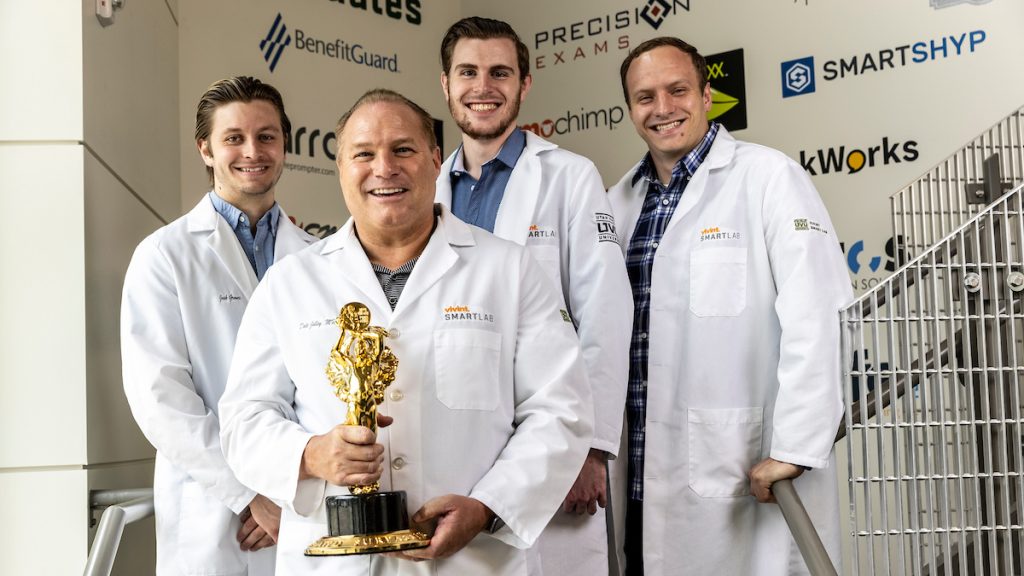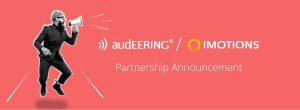Opening any research lab at a university may feel like a daunting undertaking. There’s funding, staffing, equipment and operating expenses to consider, not to mention the reason you want the lab to exist in the first place: to conduct groundbreaking research. In this blog post I am here to tell you, do not fear! At iMotions, we are continually proud of our innovative clients who have experience opening and scaling human behavior research labs. In the context of business schools especially, we’d like to share some trends we’ve observed from our customers who run successful neuro labs that should help you put fuel on the fire in making your school stand out – and make it worth the investment. We break it down into three main ideas, all of which work together to amplify your school’s profile: teaching marketable skills and workforce readiness, building your reputation with research, and fostering industry collaborations.
Benefit #1: Teaching Marketable Skills
With the cost of higher education (and with it, student debt) perpetually rising, we see an increasing number of students who are being quite selective in the amenities their university must offer so they can graduate ready to enter the workforce. Business school students’ goals often include wanting to become well-versed in the technologies and technological skills that set them apart in the eyes of potential employers. Schools must therefore meet students’ demands for where they can receive the best education with the most cutting-edge technologies.
The recent opening of the Market Innovation Lab and Observatory (MILO) at Mississippi State University’s College of Business is a case story in developing a multi-station lab for this purpose. MSU College of Business Dean Sharon Oswald said about the advantage that students receive from participating in research:
This new lab puts our students at the forefront of the marketing industry, further increasing their job prospects as companies look for marketing and business leaders that can better understand the people that every business is built around.” – MSU College of Business Dean Sharon Oswald

(photo by Megan Bean / © Mississippi State University)
The research that students conduct in neuro-focused business research labs aren’t your run-of-the-mill marketing studies. Rather it is applied, technological innovation where students test their hypotheses with live data from biosensors hooked up to real humans. From A/B testing UX and navigation of websites with eye tracking and facial expression analysis, to testing attentional and emotional engagement with media, to analyzing brain and heart signals for cognitive workload or indicators of purchase behavior, the use cases are vast. Graduates walk away not only with a degree but also with a solid skill set in collecting and analyzing human behavior data – no matter if they want to become psychology researchers or product designers or marketing analysts.
Our students are learning about things that most undergraduate students are never exposed to, and it gives them a real advantage in a competitive job market. And for the first time in my career, I am having droves of undergraduate students approach me, wanting to learn how to conduct this type of research. They are coming to MSU and the College of Business because they know that they can learn skills here that set them apart” – Professor Mike Breazeale, director of the MSU MILO lab.
Benefit #2: New & Innovative Research
You may have heard the expression “the future is already here,” coined by the speculative fiction writer William Gibson. For business schools, staying on the cusp of where technology is going doesn’t necessarily mean you’re part of an exclusive group of forward-thinkers who are speculating about how humans will make decisions in the future. To stay competitive and attract the best talent, we must acknowledge that this future is here.
Biosensor technologies can give your research institution that competitive edge. For Jared Curhan, professor at MIT’s Sloan School of Management, a human behavior research lab has meant that he has changed the conversation surrounding how emotions may affect negotiation outcomes in business situations. For researchers at Bond University in Australia, their lab linked physiological data to an ever-present question in the world of work; whether open-plan office noise is stressful. They recorded facial expressions, heart rate and skin conductance data in simulated work environments to conclude that “the objective physiological effects of noise complement the self-report mood effects and help demonstrate that employees are not merely complaining but actually being affected by the auditory environment.”
These two research examples don’t just put the universities on the figurative and literal Research Map thanks to the prestige of the publications – they also have direct implications for businesses looking to change their practices based on new insights into human behavior. This direct link to business paves the way for collaborating with companies, where your lab’s research can have immediate effects on their bottom line.

Benefit #3: Fostering Industry Collaboration
Think about it: companies have business questions they want to solve, but daily operations often take precedence over the resources needed to dedicate to R&D. What if you had an army of eager, early-career researchers ready and waiting to take on the challenge? Here is where your students fill the demand for talent that industries are looking for. What’s more, these companies, which can include neuromarketing and market research agencies, can foot the bill of the operational costs of a lab together with you. You supply the space, lab equipment (biosensors and analysis software) and man hours, and your industry partners bring the research questions for the students to help answer. Together, you lower operating costs through a veritable, sustainable lab monetization model.
Lab Director at the Center for Marketing and Sales Innovation at University of South Florida, Rob Hammond, knows instinctively that it pays to collaborate. He and Christina Norton from one of the lab’s industry partners, Revenue Management Solutions, recently spoke during an iMotions webinar (which you can watch here) about working together to assess customer experience of restaurant menus and public health campaigns. They’ve stayed flexible and thought outside the box to reach partners’ research needs while simultaneously generating key research results for both the academic and commercial sectors.
Another client that has had sizable success by linking up with industry players is the SMARTLab at Utah Valley University. They have done studies for clients like Overstock.com, Adobe and Mercedes-Benz. Collaborating with these businesses has led to revenue generation and raised awareness about neuromarketing research techniques across business sectors. Meanwhile, the students get valuable skills and the lab is its own self-sustaining entity. They’ve also won Best of State for Best Analytical Lab for the 5th year in a row!

Ready to grow or scale your Neuro Lab?
Whether you are a behavioral economist, neuroscientist, or marketing and market researcher, I hope you’re seeing the academic and commercial implications of gathering human insight at a larger scale. Your next steps should be communicating these benefits as part of your lab launch or expansion pitch, where you construct a story for why this investment makes sense. If you build the narrative around what advantages you are bringing to your school by investing in technology and creating new programs, executive boards and funders will see the benefit. Donors especially may consider how the lab will help raise the brand reputation of the university as a reason to invest – so you can position your campaign as a win-win-win for students, researchers and industry partners. Then, it’s on to researching the appropriate collaborators, technologies and software that will get you to ribbon-cutting day.
As a last thought, you don’t need to be daunted by speculations of huge costs – it’s doable to start small and expand when you have a proof of concept. The labs mentioned in this article are of varying size, and even the biggest human behavior labs like Texas A&M’s Human Behavior lab started with one station.

If you are looking for a biosensor analysis software and hardware solution, iMotions solutions consultants are ready to help you craft that story that will land you the lab you’ve been believing in!












